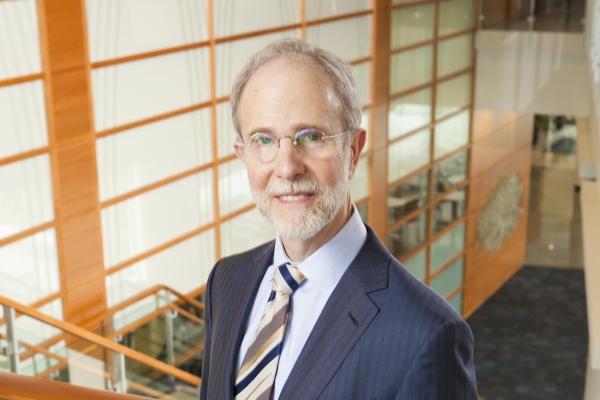
A Great Flowering of Excellence
R. Sanders “Sandy” Williams, MD’74, HS’77-’80, is a professor of medicine in the Division of Cardiology at Duke University School of Medicine. He was Dean of the School of Medicine from 2001-2007 and Senior Vice Chancellor of Academic Affairs from 2001-2010. He currently serves in advisory roles on issues including Duke Science and Technology and research translation and commercialization.
When you became Dean, what were your main goals?
I focused on what the medical school most needed: people, the culture, leadership at all levels, creativity, and maximizing our assets. Some of our peers have assets we don't have: they're in a large metropolitan area, they have centuries of history, they have a lot of local wealth. We didn't have any of that, so we had to focus on what we do have and turn that to a competitive advantage.
One advantage we have is the proximity between the medical school and the university. We needed to leverage that relationship. I also always liked Duke's status as the youngest of the top-tier medical schools. That made us more of a risk-taker. We were an innovator, and I liked this underdog, upstart, hungry mentality. And I'm sure you've heard over and over, and I embrace this: we ought to have outrageous ambition.
It's all about people. I wanted to recruit the very best people at every level: students, residents, young faculty, department chairs. And to identify the 20 or so top young people already here that we can’t do without, and make sure they feel well cared for.
Another principle was that we should be excellent in everything we do. We should be top 20, top 10 in every program. If we can't do that, why are we doing it? And above this general level of excellence, we should have maybe four or five programs that are the best in world. I looked for areas where we could do that. DCRI, the Duke Human Vaccine Institute, Duke Global Health, brain sciences, and signaling biology were examples of such opportunities. So those were my goals.
What were the biggest challenges?
Some were the challenges of outrageous ambitions that outstrip available resources. We couldn’t do everything, so hard choices were necessary, and some highly meritorious ideas could not be supported. I'm sure some of those choices were wise and proved correct in the long run, and I probably missed some opportunities too.
Other challenges were the ones inherent to all large, complex, and fragmented organizations. The creep of bureaucracy is inexorable in large organizations, though I really tried to beat it back.
What was most fulfilling?
Perhaps the most fulfilling outcome is to look around Duke today and see a number of outstanding people achieving beautifully who came here or developed when I was dean. And I am particularly proud of what we did in that era to increase the proportion of persons of color at all levels. That emphasis started a bit before I got here, and Brenda Armstrong deserves most of the credit, but I helped put a lot of momentum behind it.
And, of course, you never forget the people who shaped your life. I had the best of mentorship at Duke, from people like Eugene Stead, Bob Lefkowitz, and Andy Wallace.
How should Duke approach the future?
During the third quarter of the 20th century, Duke had a great flowering of achievement as a medical school. I think this was catalyzed by Gene Stead, the chair of medicine, and Phil Handler, the chair of biochemistry: such effective partnerships at Duke linking clinical medicine and discovery biology created an extraordinary environment that attracted scores of talented students, residents, and young faculty.
We need that again in every generation, a great flowering of excellence. I did my best to spark that. It's all about getting that magical combination of the right people together.
One area that is blossoming today is Research Translation and Commercialization. Translating research into medical advances is a responsibility for us as a school. And we’re doing it well: we had over $100 million dollars of royalty revenue last year. This puts us up with the very best schools in this regard. As Duke looks to its second century, I think we have a great opportunity to make our research useful in the real world.
Story originally published in DukeMed Alumni News, Fall 2024.
Read more from DukeMed Alumni News